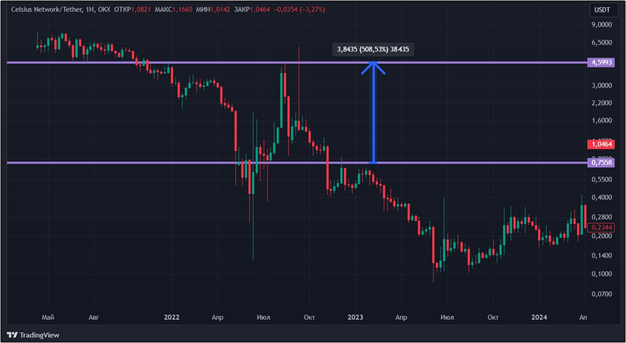What is a short
Shorting is an attempt by traders to make money by selling cryptocurrency. In contrast, long (long) is the desire to make money on a purchase. But what does this have to do with measurements in general? We’re talking about trade, aren’t we?
The point is in the nature of the transactions themselves. Trade in long is nothing extraordinary. A simple example: you have $70,000, and you buy one bitcoin at a price of $68,700 in the hope that the coin will rise in price to at least $80,000. In general, you can wait as long as you like for this. Thus, the period of time during which the transaction is open, that is, Bitcoin in your hands, can be arbitrarily long. Actually, that’s why it’s called long.
Short a little more confusing and definitely more risky. When trying to make money by selling, you go for margin trading in advance, that is, trade on credit. Why? Because you are not selling your products. Example:
1 ETH costs $3,750. You think that the price will drop to $3,000, that is, by 20%. Naturally your desire to become richer. But how to do that? If you just buy Ether at $3,750 and it drops to $3,000, you won’t gain 20%, you’ll lose (and pay a fee). There is a short for this case. You borrow 1 ETH and sell it. Everything went according to your plan: earnings were 20%. In reality, it is a little less, since the commissions for the short are higher than for the long (you will have to pay not only for the transaction, but also for the loan).
Well, we seem to have sorted out nature, but where does the name come from? It’s simple: any asset falls in price much faster than it rises. Therefore, trying to make money by selling is short-lived. Another example:
Let’s say 1 ETH costs $3,750. It drops in price to $3,000, that is, by 20%. But to grow from $3,000 to $3,750, you need to add 25%. Why? The countdown starts from a smaller amount, although if you look at the absolute value of the change, it’s both $750.
Having dealt with the short, let’s move on to the short squeeze.
What is a short squeeze
Squeeze is compression. Then a short squeeze is a decrease in the number of short transactions, usually quite sharp, caused by an increase in the price of a crypto asset. In general, such events are an integral part of any market. However, short squeezes are often difficult to distinguish from regular price movements.
A striking example is the situation with Celcius (CEL) July 2022. It was then that the credit company Celcius Network went bankrupt. That is, fundamental factors spoke in favor of reducing the market value of the CEL coin. This point of view was also shared by investors who shorted this cryptocurrency. Only in reality in the moment everything turned out to be different.
In less than five weeks, the CEL token soared in price by 508.53%, from $0.76 to $4.6. Of course, then everything fell into place, and the cryptocurrency fell to record lows. However, from July to August 2022, all short sellers were dealt a crushing blow.

Source: tradingview.com
Why does short squeeze happen?
Reasons for short squeeze
There is only one reason – the nature of short transactions. If the price rises and you sell the cryptocurrency, then your losses increase like a snowball. To endure this for a long time, firstly, is quite difficult from a moral point of view, and secondly, you need a lot of money, since any short requires the presence of a margin – collateral. And the further the price rises, the more finances will be required in the account. In most cases, traders simply force liquidate their short positions. And then they start buying it themselves: they want to win back.
So it turns out that short squeeze is bad?
Pros and cons of short squeeze
Seriously, no. Short squeeze is an absolutely neutral phenomenon in the cryptocurrency market, which is caused by the behavior of traders. If you suddenly became a victim of it, it’s actually only because you were trying to raise money quickly without having a proper strategy. Any trading, especially margin trading, must be accompanied by a strict risk management system. You must determine your maximum losses in advance and place stop orders. It’s not a big deal if you don’t earn money. But losing your savings to zero is, yes, terrible.
At the same time, a number of players make money on short squeezes. In the same CEL story, people who held the coin from mid-July to mid-August 2022 were able to make good money. And it’s not their problem that the short sellers went bankrupt at the same time. Some people lose, some people find.
Conclusion
In short, a short squeeze occurs when demand greatly exceeds supply. This leads to a chain reaction of massive closing of short positions. In general, the situation is quite standard for crypto assets and does not carry any negativity.
Source: Bits
I am an experienced journalist, writer, and editor with a passion for finance and business news. I have been working in the journalism field for over 6 years, covering a variety of topics from finance to technology. As an author at World Stock Market, I specialize in finance business-related topics.







